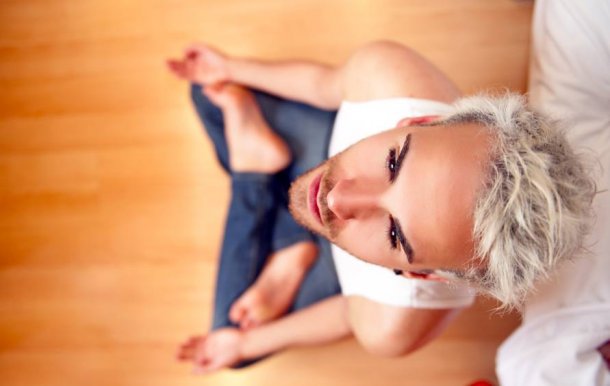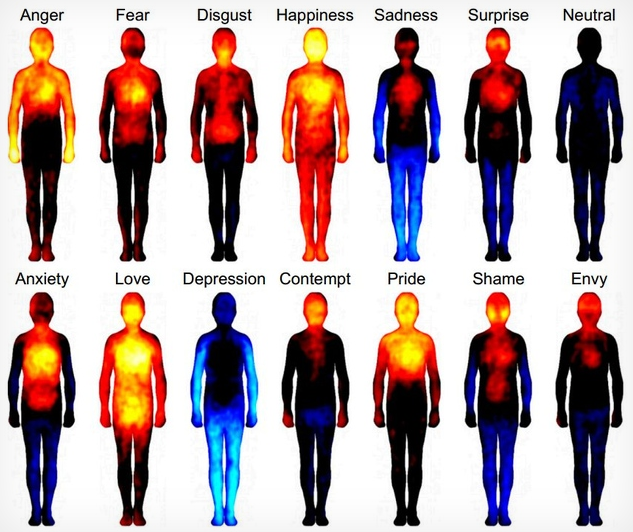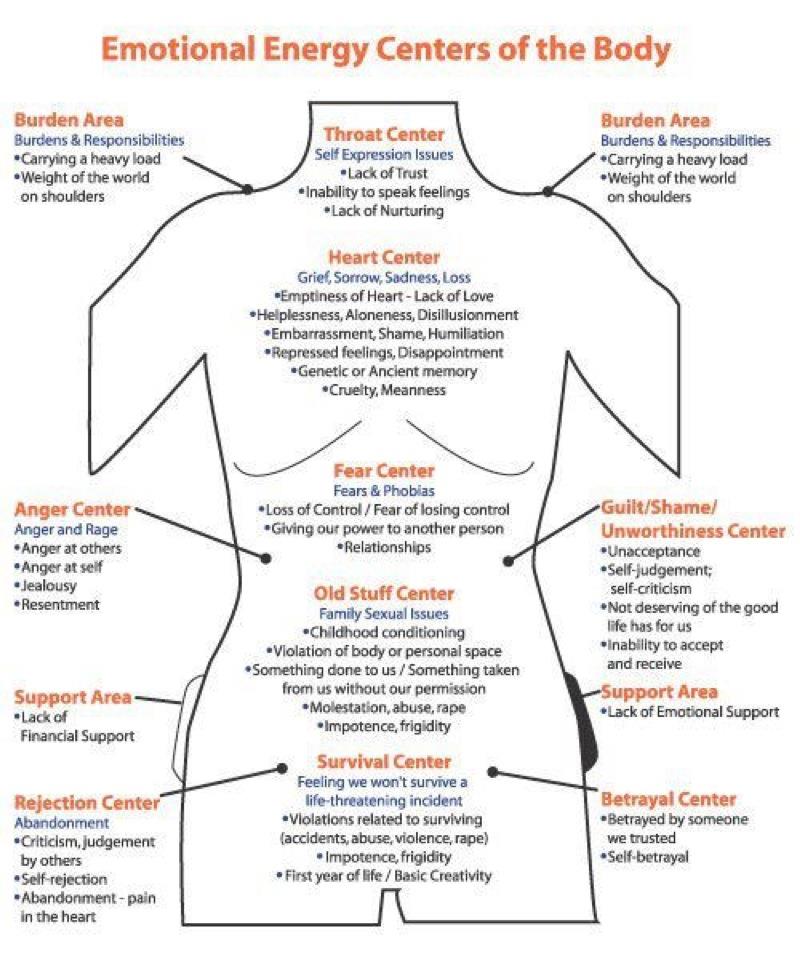
21 Oct Discover Your Emotional Anatomy: Where do you FEEL your feelings?
If we were to ask you what your most commonly experienced emotion was, you could probably offer up a few answers on the spot, right?
Now, what if we asked WHERE you felt those emotions within your body? That’s probably a little more difficult to answer…
Because most people are unaware of the incredible relationship between emotions and physical sensations, and how the knowledge of it can totally transform your emotional life.
We say we have a “gut feeling” about something, or a “lump in our throat” when we’re upset. But these aren’t just figures of speech… they are real signals from our bodies that should be listened to, identified, and released if we want to evolve into our emotional and physical potential.
Feelings are called such for a reason… You FEEL them.
People spend so much time talking about how they feel. They attend workshops, visit therapists, and vent their feelings to anyone who will listen. They intellectualize and analyze their feelings… they think and talk about them… but they rarely FEEL them.
Emotions are physiological sensations that occur within your physical body.
Developing an awareness of exactly WHERE you are feeling them, HOW they feel, and what you can do to release them in healthy ways, can be the key to emotional freedom.
Research has linked specific emotions to certain regions within the body. Each emotional experience tends to have its own “home” where it manifests within your physical being.
As you can see in the study’s heat map above, certain regions of the body are activated during specific emotional experiences.
For example, happiness triggered warm sensations throughout the whole body, whereas envy only surfaced in the head and neck.
This is because negative emotions cause different chemical reactions in different places in your body than the chemicals released when you feel positive emotions.
Interestingly, many of these emotions look similar… like how Pride and Anger generate heat exclusively in the upper body, or how Love is the only emotion (other than happiness) that creates a warm glow between the legs (hmm… we wonder why that might be? :-).
Even more remarkably, these “sensation stations” were consistently similar across different cultures – from Western European to Eastern Asian – indicating that there is a biological basis for emotions and their corresponding reactions in the human body.
In other words – the location of feelings is universally the same in every human body.
This is groundbreaking.
It gives you an incredible tool for developing emotional intelligence and control. Like a treasure map for human feeling… when you understand how to read it, you begin to discover the emotional depth, strength, and wealth you have within yourself.
Bring awareness to your own physical-emotional experience and you will see undeniable patterns begin to emerge.
Here is another chart that offers some insight into where common emotional feelings can manifest physically.
Now that you understand the basic concept, you can apply this knowledge in two powerfully transformative ways.
First, you can begin to consciously identify that “this feeling of anger that you’re experiencing” is centralizing itself in your chest area, and work to release that emotion through PHYSICAL means:
- Straightening your posture for maximum energy flow
- Extending your arms out to your sides
- Opening your chest and heart, stretching and massaging the muscles
- Breathing deeply to expand your lungs and diaphragm
Second, you can start to look more deeply into the underlying sources of chronic pain in your body. While we certainly don’t believe that every ailment is a result of emotional distress, it is always worth taking a second look at what’s going on internally when you begin to notice nagging patterns of discomfort within your body.
For instance, neck and shoulder pain is usually brought on by stress and overwhelm, or carrying heavy burdens, often related to work. You literally feel like you’re carrying the world on your shoulders.
Poor posture, such as slumped shoulders and an inability to naturally stand tall and proud is commonly due to repressed emotional energy in the chest, which is associated with insecurity, judgment, and lack of unconditional love (toward yourself or others). Watch yourself the next time you start to feel insecure. Your shoulders will curl inward to close off your chest.
The bottom line?
If you change your body, your emotions will change… and vice versa.
When you bring positive, healing energy to your areas of tension, you not only heal your physical body, but your emotional state as well.
Make a deep commitment to learn about your emotional self. The more you practice, the better and quicker you become at identifying and releasing sensations that don’t serve you well. You become a skilled master in the art of physical-emotional intelligence. And you radically transform your life, and the lives of those around you.


